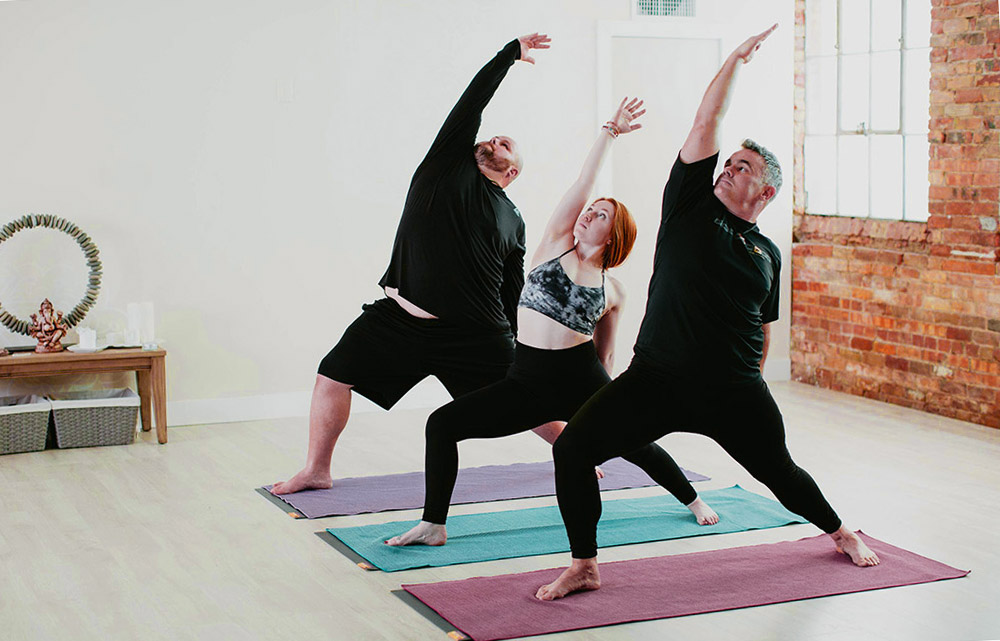
Our bodies change. As we age, they require more TLC. No matter how well you eat, or how much yoga you practice, our bodies wear out. We all carry different genetic seeds, and are subject to different environmental factors, so the process looks different for each person. But even as our bodies change and become higher maintenance, we can still have gratitude for the many joys we experience through these bodies every day.
A Wake-Up Call
A few years ago, my body gave me an insistent wake-up call. My body, which has always been very low maintenance, sent me a message, loud and clear: “Stop taking me for granted! How about a little gratitude?”
In 2015, my left hip was replaced because of hip displaysia. Even then, I knew it was only a matter of time for my right hip. A year and nine months later, I got a shiny, new titanium joint on the right side.
On the first day of an 18-day meditation retreat I at Spirit Rock Meditation Center that same year, I received a diagnosis of early-stage breast cancer. I was fortunate in two ways: It was detected very, very early and didn’t require a lot of radical treatment. And I was in the perfect setting to receive the news. While I experienced the expected anxiety and sadness, my mind didn’t add any drama. In fact, I experienced a whole lot of equanimity around my diagnosis. It seems that 30 years of meditation practice had paid off.
For many years I took this body for granted. I didn’t visit a doctor for 25 years. Nothing happened to my body that I couldn’t take care of through natural means. But that changed.
Why Practice Gratitude?
Studies have found that cultivating gratitude actually confers health benefits. A 2015 article in Newsweek cited five proven benefits:
- Grateful people are more hopeful and healthier
- Improved sleep quality
- Increased self-esteem
- Increased helpfulness and empathy
- Increased resilience
Thich Nhat Hanh teaches that appreciation of our bodies—not only when we are experiencing pleasant sensations, but at the times when things are just going along as usual—can be a source of happiness. He says, “If we are not aware that we are happy, we are not really happy. When we have a toothache, we know that not having a toothache is a wonderful thing. But when we do not have a toothache, we are still not happy. A non-toothache is very pleasant.” We can practice gratitude for those times when we don’t have a toothache—or any other maladies.
How to Practice Gratitude for Your Amazing Body
Here are some ways you can practice gratitude for the body you live in:
- According to the Mayo Clinic our hearts beat an average of 60 to 100 times per minute, which translates to 86,400 to 144,000 beats per day. If you’re reading this, your heart is doing just that. It, along with the estimated 23,000 breaths you take each day, are keeping you alive. Give your heart some gratitude.
- Your eyes, ears, nose, tongue and skin allow you to enjoy the sights, sounds, smells, tastes and sensations of our world. Of course, one or more of these senses may lose acuity over time. But you can appreciate them for the window they give you into the rest of the world all day long.
- Your nervous, digestive, circulatory, respiratory and reproductive systems all contribute to your body’s normal, healthy function. Often we don’t pay much attention to the body until something goes wrong. Take time to acknowledge your body when it’s working right, not just when it’s giving you trouble.
- If you practice yoga, be grateful that you have the means to travel to a class, get onto the floor and get back up. Be grateful that you get to experience the practice we all love through the body that gets you there.
- Give your body a nice, long Savasana after you practice. It takes 10-15 minutes for your body to achieve physiological relaxation after physical activity. Savasana allows you to integrate the energies you cultivate in your asana practice. Give your body the time it needs to recover and replenish itself.
